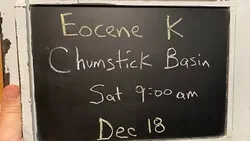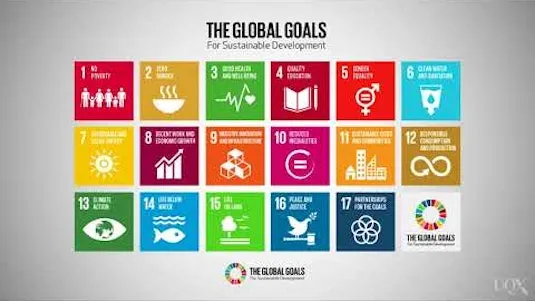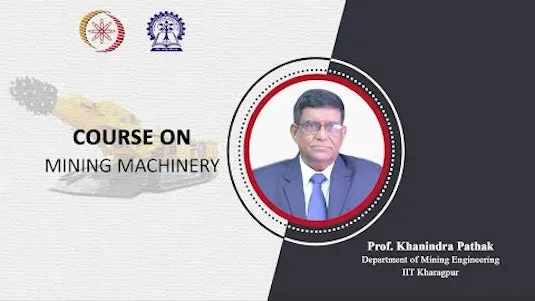
Eocene K - Chumstick Basin w& Matt McClincy & Erin Donaghy 
Matt McClincy and Erin Donaghy lead a lecture on the Eocene K - Chumstick Basin. They review the previous sessions, discuss the Siletzia Sourdough Upgrade, and compare the North Cascades to the Cascades. They also explore the Eocene sedimentary layers, the old and new Chumstick dates, and the lecture's schedule and Eocene K - Chumstick Basin field trip. ▼
ADVERTISEMENT
Course Feature
![]() Cost:
Cost:
Free
![]() Provider:
Provider:
Youtube
![]() Certificate:
Certificate:
Paid Certification
![]() Language:
Language:
English
![]() Start Date:
Start Date:
On-Demand
Course Overview
❗The content presented here is sourced directly from Youtube platform. For comprehensive course details, including enrollment information, simply click on the 'Go to class' link on our website.
Updated in [February 21st, 2023]
In this course, Matt McClincy and Erin Donaghy will provide an overview of the Eocene K - Chumstick Basin. The video will start with a lecture and review of previous sessions. Topics discussed will include Siletzia Sourdough Upgrade, Chumstick Basin, North Cascades vs Cascades, Eocene Sedimentary Layers, Old Chumstick Dates, New Chumstick Dates, Schedule and Eocene Papers, Nick's Youtube Videos, Matt's Chumstick Master's Thesis, Matt's Recent Environmental Work, Oil Company Funding, Q&A with Matt, Erin Donaghy, Sunitsch Tuff, Clark Canyon 4 Tuff, Master's Thesis Guidance, Erin's Sister, Q&A with Erin and Matt, Chumstick Basin Photo, Matt's Thesis Figures, Q&A with Nick, Toast and Goodbye.
[Applications]
The application of this course could include further research into the Eocene sedimentary layers of the Chumstick Basin, as well as the North Cascades versus Cascades. Additionally, students could use the information from Matt McClincy's Chumstick Master's Thesis and Erin Donaghy's Sunitsch Tuff and Clark Canyon 4 Tuff to further their understanding of the area. Finally, students could use the Q&A sessions with Matt, Erin, and Nick to gain further insight into the research and theses.
[Career Paths]
1. Geologist: Geologists study the physical structure and composition of the Earth, including its rocks, minerals, and other materials. They use their knowledge to explore for and develop natural resources, such as oil and gas, and to assess the environmental impact of human activities. The demand for geologists is expected to grow in the coming years as the need for energy and natural resources increases.
2. Environmental Scientist: Environmental scientists study the environment and its components, such as air, water, and soil, and the effects of human activities on them. They use their knowledge to develop solutions to environmental problems, such as pollution and climate change. The demand for environmental scientists is expected to grow as the need for sustainable development and environmental protection increases.
3. Petroleum Engineer: Petroleum engineers design and develop methods for extracting oil and gas from the Earth. They use their knowledge of geology, chemistry, and physics to develop new technologies and processes for extracting and refining oil and gas. The demand for petroleum engineers is expected to grow as the need for energy increases.
4. Hydrologist: Hydrologists study the movement, distribution, and quality of water on the Earth's surface and underground. They use their knowledge to develop solutions to water-related problems, such as drought and flooding. The demand for hydrologists is expected to grow as the need for water resources management increases.
[Education Paths]
The education paths recommended to learners from this course are:
1. Geology: Geology is the study of the Earth, its composition, structure, and history. It is a rapidly developing field, with new technologies and techniques being developed all the time. Geologists use a variety of tools to study the Earth, including satellite imagery, seismic surveys, and fieldwork. Geology degrees are available at the undergraduate and graduate levels, and can lead to careers in research, teaching, and industry.
2. Environmental Science: Environmental science is the study of the environment and its interactions with humans and other organisms. It is a multidisciplinary field, incorporating elements of biology, chemistry, physics, and other sciences. Environmental science degrees are available at the undergraduate and graduate levels, and can lead to careers in research, policy, and industry.
3. Earth Science Education: Earth science education is the study of how to teach Earth science concepts to students. It is a rapidly growing field, as more and more schools are incorporating Earth science into their curricula. Earth science education degrees are available at the undergraduate and graduate levels, and can lead to careers in teaching, research, and policy.
4. Petroleum Engineering: Petroleum engineering is the study of the extraction and production of oil and gas. It is a rapidly growing field, as new technologies and techniques are being developed all the time. Petroleum engineering degrees are available at the undergraduate and graduate levels, and can lead to careers in research, teaching, and industry.
Course Provider

Provider Youtube's Stats at AZClass
Discussion and Reviews
0.0 (Based on 0 reviews)
Explore Similar Online Courses

Free CCNA IPv4 Header Day 10 CCNA 200-301 Complete Course

How to setup a Lumenier QAV X

Python for Informatics: Exploring Information

Social Network Analysis

Introduction to Systematic Review and Meta-Analysis

The Analytics Edge

DCO042 - Python For Informatics

Causal Diagrams: Draw Your Assumptions Before Your Conclusions

Whole genome sequencing of bacterial genomes - tools and applications

Mining Engineering

The Future of Mining?


Start your review of Eocene K - Chumstick Basin w& Matt McClincy & Erin Donaghy